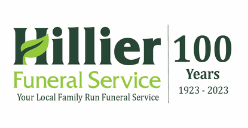In case you missed it see what’s in this section
Let's Talk
Top 5 Tips to Prevent Accidents at Home
Lots of us spend a significant portion of our time in our homes, which means it’s not uncommon for accidents to happen there. The Royal Society for the Prevention Of Accidents (ROSPA) reports that the home is the most common place for accidents to happen.
We all deserve to feel safe in our homes and these top 5 tips can help you identify potential hazards and prevent accidents in your home.
What are the most common accidents and how to prevent them?
Here are some of the most common accidents at home and ways you can reduce your personal risk.
1. Trips and falls
Worldwide, falls are the second leading cause of death from unintentional injury. Many people think of falls as being an older-age problem, but although age is a significant factor falls are common in all age groups.
You can reduce the risk of falls in your home by keeping walkways tidy and free from clutter, ensuring your home is well-lit and waiting for wet floors to dry before walking on them.
2. Choking hazards
Choking can happen at any age but is a particular problem among babies and toddlers. Common choking hazards in this age group include buttons, coins, small toys, and button batteries. Certain foods like grapes, nuts, hard sweets and chewing gum also present a choking risk.
Any small object that a baby or child can reach to put in their mouth could present a choking hazard. You can reduce the risk of choking hazards by cutting food such as grapes in half lengthways and keeping other choking hazards out of reach of young children.
3. Bathroom falls
Bathroom falls are unfortunately common in all age groups due to the additional hazards presented by wet surfaces such as baths, shower trays and floors.
You can reduce the likelihood of falls in your bathroom by using non-slip mats in your bath or shower. You may also want to consider adding grab rails or safety handles to aid climbing in and out of baths or showers, as this is how most bathroom falls occur.
4. Stair falls
Stair falls can be very dangerous. It isn’t uncommon for people of all ages to lose their footing on the stairs but safety measures such as handrails can prevent a simple slip from becoming a potentially catastrophic fall down the stairs.
You can reduce the risk of stair falls in your home by making sure you have a handrail fitted all the way to the top of the staircase. If your stairs are carpeted, ensure the carpet is fitted properly and not coming away. If you have an outdoor staircase, then fitting non-slip treads or high-contrast strips at the edge of each step can reduce the likelihood of falls.
5. Burns
People of all ages are at risk of burns and scalds in the home and there are lots of potential hazards we use daily, such as kettles and radiators that can cause injury.
You can reduce your risk of burns in the kitchen by ensuring pan handles are turned in when cooking so they’re less likely to be knocked from the hob and wear heatproof oven gloves when using the oven.
Make sure you keep heated appliances such as hair straighteners out of reach of children and turn them off immediately after use. If you have young children in your home, always run your bath with cold water first to avoid the risk of scalding if they were to fall in.
What to do if you have an accident at home
If you or a loved one has an accident at home, it’s important to seek medical advice right away. After you have dealt with your injury, you should make any necessary changes to prevent it from happening again.
If the injury was not your fault, for example, if a contractor carried out faulty work on your property and you’ve been injured as a result, then you should seek advice from a specialised solicitor about your rights as a personal injury claimant.
Weather in Swindon
Listings





















